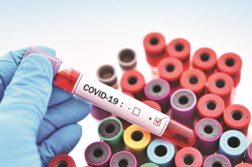It’s crucial to be aware of some extremely few bacteria causing some people to feel unwell. They belong to a specific kind of COVID-19 bacteria. Fortunately, we are learning a lot about them, and medical professionals are doing amazing things to keep us all safe.
Where Can We See This Disease?
These microscopic microorganisms are currently increasingly growing in several regions of India. Delhi, Maharashtra, and Kerala are some of these regions. This indicates that, in comparison to other areas, more people experience symptoms in these areas. However, we are always closely monitoring the entire country.
How Does This New Variant Affect? The Symptoms to Look Out for!
These microscopic bacteria can produce a few minor symptoms when they get into a person’s body. Also, the majority of people say they feel like they have a mild case of the flu or a typical cold. These symptoms usually consist of:
- Dry Cough
- Lack of energy and Tiredness
- Mild Headache
- Sometimes, a Runny Nose Or Blocked Nose
- Upset Stomach, Nausea, Vomit In Some Cases
- Mild Fever
Moreover, It is very comforting that these microorganisms do not cause serious sickness for the majority of people. Indeed, relaxing quietly at home helps a lot of people recover.
How Are These Small Bacteria Spreading?
The air is the main medium via which these small bacteria move. Imagine that when someone sneezes, coughs, or even just talks, tiny, invisible particles emerge. Bacteria can be contained in these microscopic particles. As a result, if someone who is ill releases these droplets while nearby, others can take them in.
Additionally, these bacteria occasionally end up on objects like toys or tables. The bacteria can enter a person’s body if they come into contact with these infected objects and then touch their face, especially their mouth, nose, or eyes. This shows why it is so crucial for everyone to keep their hands clean!
Who Requires More Attention and Care?
It is important to understand that some people need extra attention and care, even when the majority of people are suffering from minor symptoms. These are the people of our community who are most at risk:
- Senior citizens: Their bodies can’t be as strong to protect against new infections.
- People with pre-existing medical conditions: A person’s body can’t have as much energy to fight off this new infection if they are already dealing with existing health issues.
- People with weak immune systems: Those whose bodies struggle to fight off diseases are also more vulnerable.
Health officials place a high priority on protecting the most vulnerable people in our community because it is a shared commitment.
What Do Our Medical Professionals Do? Being Alert and Proactive!
Our committed health professionals are diligently and wisely working to maintain public safety, so there is no reason for concern. They are carrying out some progressive initiatives:
- Constant Monitoring: They are keeping a careful eye on how these bacteria are spreading throughout various areas. They are better able to determine where resources and support are most required due to this close observation.
- Hospital Preparation: It is recommended that hospitals maintain their equipment and readiness. This involves making sure there are enough beds, medical equipment, and qualified personnel on hand in case something goes wrong.
- Clear Guidance: Everyone is receiving helpful guidance from health experts. It is highly advised to use a mask in busy indoor areas. Masks serve as a useful barrier to keep out small particles in the air.
- Encouraging Hand Sanitation: It is constantly highlighted how important it is to wash your hands thoroughly and frequently with soap and water. Germs are successfully removed from our hands by this easy technique.
- Teaching Responsible Behavior: They respectfully encourage anyone who is feeling ill to stay at home and take it easy. This kind of deed stops the viruses from spreading to other people.
- Scientific Progress: Researchers are hard at work examining these microscopic microorganisms. They hope to have a deeper knowledge of them to be able to create preventative and treatment plans that are even more successful.
By working together, we are continuing to take a proactive and optimistic approach to health management. Everyone can help maintain the well-being and energy of our communities by following these easy rules.




